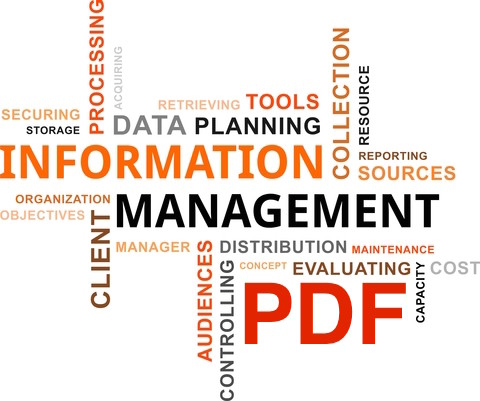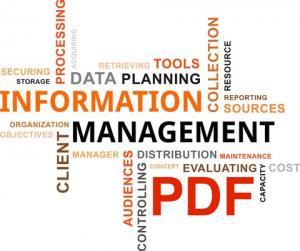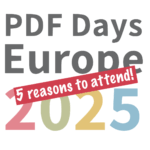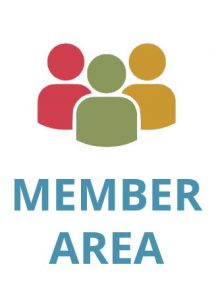Making information management real

As CEO, Duff coordinates industry activities and promotes the advancement and adoption of PDF technology worldwide.


 In the ECM space practitioners still talk about the same basic set of problems as they did back in 2000. The conversation has not really progressed; its just gotten more complicated.
In the ECM space practitioners still talk about the same basic set of problems as they did back in 2000. The conversation has not really progressed; its just gotten more complicated.
Since 1996, I've watched leading document-management, ECM and similar trade-shows and conferences such as AIIM's change their focus from scanner sales and service to content management to big data that promises extraordinary new insights, savings, opportunities, etc.
Each year, the hardware and software does indeed get better at doing its thing. Even so, the questions from the attendees dont seem to change.
Information management conference attendees
ECM conference attendees and here were speaking of practitioners and users, not vendors or consultants - tend to break down into three groups:
- Those fully invested in XYZ vendors solution they are looking for best practices within that solution
- Those running into limitations with their legacy solutions, and are wondering what to do about it
- Those interested in best practices in their line-of-business, irrespective of their installed technology
Group 1 attendees are looking for support for a specific technology / implementation. They tend to think in terms of whats possible by studying the solutions user interface.
Group 2 attendees are the old salts who have come to realize, among other things, that:
- ECM systems are extremely sticky large organizations tend to accrete multiple semi-overlapping systems - and then spend lots of time and effort attempting to coordinate them
- Users just don't behave as the systems tend to assume, and often use other work-arounds
Group 3 attendees prefer not to think about technology, but instead focus on specifying the right solution in principle.
Theres not much to say to group 1 other than ask your vendor to make it work better for you. At broader industry events, most attendees these days are in groups 2 and 3.
Group 3 attendees get the major focus from ECM conference speakers. But what do they hear, year after year?
- Policies arent connected to content
- Information silos prevent organization-wide awareness and cripple productivity
- Engagement models should ensure consistent customer experiences, but almost never do
- The upgrade landscape is a nightmare
Its all true. And its all been true since as long as Ive been in this industry (20 years).
The proliferation of electronic documents, email, social media, file-sharing, open-source software, databases, web technologies and much more are beginning to close the door on the era of the fax machine, but there's a long way to go. Very notably, the fundamental questions and problems havent changed much since the days when the fax machine, mail service and FedEx was how information was communicated.
Whats missing? A common portable container
There are many complications in developing software and solutions for other peoples core business systems. Here Im going to focus on one concept that really should have taken off by now: a common portable container.
What would such a container do? It would have the following features (assuming conforming software):
- It could hold any type of content reliably
- It would be self-contained, and work online or (when appropriate) offline
- It would be resilient; allowing for the real world of additions and other changes
- It would include a standardized metadata model and provide for annotations
- It would deliver consistent results to every type of user
- It could be digitally-signed using common methodologies to protect its integrity
- It could be encrypted to control access irrespective of location
By leveraging a single platform technology, users could begin to enjoy an ECM environment in which:
- Standardization of content containers makes it possible to apply policies and enable smart content
- Inherent portability multiplies options for bridging or upgrading systems
- Consistent customer experiences irrespective of factors such as connectivity, device, etc. become the norm
- The trend towards consumerization is extended into more complex workflows and functionality
- Retention costs drop while management options expand
What is this technology? PDF. Yes, its been here all along, and its really the only candidate. PDF addresses all the requirements of a portable container format, and for most features, has done so for over a decade. So what's holding the ECM industry back?
Partly, it's the legacy (too many otherwise well-informed people think Adobe still owns PDF, but it's actually an ISO standard).
Partly, it's because PDF is internally complex, and thus more vulnerable to the Not Invented Here phenomenon.
Mostly, it's the fact that a standardized, fully-supported and broadly-accepted portable container format would provide users with powerful technology independent of any specific vendor, ending the era of vendor lock-in. Vendors don't like that, but customers do.
Over the next 5-10 years, expect to see PDF become the common portable container for a new era of smart, interconnected document and information management systems.
With real answers for information management needs, practitioners will finally be able to focus their questions on on best practices in general, and shed the handcuffs binding them to today's expensive, clunky and overlapping systems.




